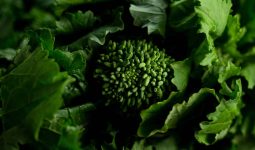Some things have changed since the days when grapes were pressed barefoot, but you might be surprised to learn that many traditional methods of wine production have remained the same.
Pick, crush, age—quite simply, right? Somehow. Although the wine production process is relatively easy to understand, how wine is produced is much more complex than it first appears.
Harvest decisions, fermentation choices, wine production methods, aging regimes, and bottling choices all affect the final taste of wine.
Although many winemakers believe premium wine is first made in the vineyard by carefully cultivating high-quality grapes, what happens in the cellar is just as important.
This guide will walk you through the six basic steps of winemaking, including picking grapes and the difference between how red and white wine are produced.
Understanding the process will help you enjoy wine more, from harvesting to filling the final product.
Harvesting the Grapes
Red wine is made from black (also named purple) wine grapes. All of the color in a glass of red wine comes from anthocyanins (a red pigment) found in the skins of red grapes.
The first step in producing wine is transporting the fruit from the vineyard to the winery.
However, more decisions need to be made here than you might think.
The most important thing during the harvest is to harvest the grapes at perfect maturity.
This is necessary because the grapes do not continue to ripen after harvest.
Winemakers routinely test fruit from their vineyards for acidity and sugar levels throughout the year.
When the time is deemed favorable, the teams gather and are sent to the vineyard to pick the fruit.
- Grapes picked prematurely can result in light-tasting and acidic wines.
- Grapes harvested late can result in wines that taste overripe and flabby.
Harvesting can be done by hand or machine, and the way the grapes are picked doesn’t have much of an impact on the wine itself.
The former requires more time, although it allows better quality control and classification in the vineyard (optional).
The latter is usually done on larger farms with more land to cover.
However, many vineyards are on steep slopes, making heavy and bulky machinery difficult to use.
Because many wine regions are in hot climates, harvesting often takes place at night to protect pickers from the scorching sun.
Once the grapes, stems, and everything else are harvested, they are transported to be crushed.
For all winemakers, the harvest period is the most critical (and tense) time of the year.
Crushing/pressing of the grapes
This step is slightly different depending on whether you are making white, rosé, orange, or red wine.
First, after picking and harvesting, the winemaker may choose to pass it through a machine called a de-stemmer.
This device (you guessed it) removes grapes from the stems. Cushing follows; the fruit is usually crushed and pressed for white wines, so the juice is quickly removed from contact with the grape’s skin.
After pressing, the grape juice is transferred to a container to decant. It is then filtered through a process called racking, which ensures that all sediment, including the grape skin and seeds, is gone.
By contrast, for red and rosé wines, the fruit is lightly pressed or crushed (with or without stems) and left with the skin for some time to macerate before fermentation.
Indeed, many qualities and characteristics of red wine come from the tannin in the grape seeds and skins. As such, they ferment with the skin on.
The fermentation process
Fermentation is probably the most intricate step in wine production: it’s when alcohol is created. Yeast is sometimes added to grape containers to trigger this chemical reaction.
The added yeast converts the sugars in the grapes into ethanol and carbon dioxide, giving the wine alcohol content.
At this point, many mass winemakers will mix other additives, such as artificial colors, sweeteners, and preservatives like sulfur.
Winemakers usually have legal permission to add whatever natural ingredients they want. However, this can include dangerous amounts of sulfur and factory-grown yeast.
For red and rosé wines, the grapes ferment with the skin, giving them that iconic crimson color.
While red wine is in contact with the skin for 5-21 days or more, rose grapes only ferment for a few hours, giving it a much lighter hue.
Red wine ferments at 70 to 85 degrees in large open containers. As the wine ferments, winemakers use open-topped vessels to punch down the skins of the grapes, extracting more flavor.
White wine is slightly simpler than red and rosé. After the white wine is racked, the clear grape juice ferments at a lower temperature, just 45-60 degrees. This whole fermentation process takes several weeks.
Wine Pressing
Most wines produced take 5 to 21 days to ferment sugar into alcohol.
Some rare specimens, such as Vin Santo and Amarone, take between 50 days and up to 4 years to fully ferment!
After fermentation, the winemakers press the free liquid wine from the tank and place the remaining shells in the press. By pressing the skins, the winemakers obtain around 15% more wine!
Malolactic fermentation (also called “second fermentation”)
As the red wine settles into containers or barrels, another “fermentation” occurs.
The tiny microbe feeds on the acids in the wine, turning the intense-tasting malic acid into a creamier, chocolate-tasting lactic acid. (The same acid you find in Greek yogurt!)
Almost all red wines undergo malolactic fermentation (MLF), but only a few white wines.
A white wine we all know, Chardonnay. MLF is responsible for the creamy, buttery flavors of Chardonnay.
The maturation/Aging process
The aging process(or élevage) can add complex flavors and textures to wine production.
Red wines are aged in various storage vessels, including wooden, concrete, glass, clay, and stainless steel barrels.
Each container affects the wine differently as it ages. Wooden barrels affect the wine the most. The oak wood alone flavors the wine with natural compounds.
The porous nature of oak barrels allows small amounts of oxygen to dissolve into the wine.
This softens the tannins’ harsh texture and gives them a smooth oaky flavor.
Winemakers have a large number of different barrels at their disposal for how the wine is produced, each with its qualities:
- The two most popular barrels are French oak and American oak. Depending on the wood’s origin, each barrel creates different wine qualities. French oak can add a subtle spice to the wine, while American oak can add a hint of vanilla.
- Using new oak barrels produces different flavors compared to reusing old oak barrels. Indeed, the extraction of the oak aroma decreases with each use.
- Some winemakers choose to forgo barrels completely and oak their wines using oak chips. These pieces of wood are much cheaper than investing in oak barrels.
While most white wines are fermented in stainless steel tanks, some, like Chardonnay, use the red wine method of fermenting wine in oak barrels.
Unlined clay and concrete tanks smooth the wine by reducing acidity. Of course, time affects the flavors of red wine.
The longer the wine is dormant, the more chemical reactions occur within the liquid itself. Some describe red wines as smoother and nuttier as the years go by.
The time a wine must be aged depends on the winemaker’s goals. While some wines will mature for years and years, others are designed to mature briefly; many will be on sale a few months after the harvest.
Fining, bottling, and corking
When the wine has matured, it is ready to be clarified or “fined.” This process removes any unwanted particles that could make the wine cloudy or colorless.
To achieve this, winemakers add a substance that binds to unwanted particles, making them larger and large enough to filter out.
Several fining agents remove suspended proteins from the wine produced (proteins cloud the wine).
Although there are some vegan options, such as bentonite (clay), most are derived from animal products. Folk remedies include milk, egg whites, gelatin, and fish guts. (Yes, fish guts).
Even bull’s blood was a popular supplement in the past. If you’re a vegan wine fan, do your research before opening this bottle.
While most wines have been penalized, with the rise of biodynamic, organic, and natural wines, some winemakers have been deprived of them.
However, the result does not look so good and tasty as the wine may look cloudy with proteins.
The wine then passes through a sanitary filter. This is important because it reduces the possibility of bacterial spoilage.
Of course, many good winemakers don’t refine or filter because they think it diminishes texture and quality. Whether that’s true or not is up to you.
After the fining process, the wine is bottled. Sterile glass wine bottles are filled from below through a tube.
Although this process is often automated, some small winemakers will do it manually.
Completing this step with as little oxygen exposure as possible is essential. A small amount of sulfur dioxide is frequently added to help preserve the wine.
Once the wine is safely in the bottle (in its place), the bottle is closed.
While corks are the traditional method of closure, screw caps are becoming increasingly popular.
Some sommeliers even claim that metal screw caps are better than cork due to their greater ability to trap bacteria and prevent wine spoilage.
bottle aging
Finally, some special wines have aged in the winemakers’ cellars for years.
If you research different types of red wine production (like Rioja or Brunello di Montalcino), this step is essential for reserve bottling.
So the next time you open a bottle to drink, try to find out what’s inside!








